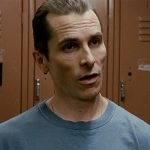Toy Story 3 – 2010
Wow. For an animated film that supposedly caters to an audience of children, this film has a lot of remarkably adult themes. It had action, suspense, deep drama, comedy, and moments that literally brought me to tears. But despite all this, it is still appropriate for kids. It is amazingly written, wonderfully animated, and voiced by a fantastic cast of actors.
The Toy Story franchise began back in 1995 with its first installment, and everybody loved its unique story and iconic characters. In fact, it was the film that really put Pixar Animation Studios on the map and launched an empire. In 1999 Toy Story 2 came out and while people still loved it, it is generally considered to be inferior to its predecessor. But now we have the third film in the franchise which brought back most of the old beloved characters, and introduced us to a host of new ones.
In the Toy Story world, toys are alive, each with their own personality and their own relationships to each other. They are animate when no human eye can see them, but inanimate when a living being in in their vicinity. All toys are like this, though the franchise follows the toys of a young man named Andy. As the franchise continues to progress, Andy grows up, and like we all do, he begins to leave his childhood toys behind.
Andy’s favorite toy has always been the cowboy, Woody, voiced by Tom Hanks. But coming in at a close second, is Buzz Lightyear, the galactic space hero, voiced by Tim Allen. Other toys include the cowgirl Jessie, voiced by Joan Cusack, Don Rickles and Estelle Harris as Mr. and Mrs. Potato Head, Blake Clark as Slinky Dog, Wallace Shawn as Rex, John Ratzenberger as Hamm. And of course, the film’s main antagonist, Lots-O’-Huggin’ Bear, voiced by Ned Beatty. Other big names like Timothy Dalton, Kristen Schaal, Bonnie Hunt, Whoopi Goldberg, and Laurie Metcalf voiced other toys.
Special props have to be given to Hanks and Allen for the wonderful characters that they bring to life. Very well done. And just think, Paul Newman was considered for the role of Woody, and Billy Crystal, Bill Murray, Chevy Chase, and Jim Carrey were all considered for the part of Buzz. How different would the films have been?
So what was it about the third installment of the franchise that earned it a Best Picture nomination? And let me say that I believe the nomination was completely deserved. I think it was two specific things. First, there was the powerful scene in which the toys almost died. And second was the end of the movie in which Andy gives his toys to a young child who will love them and take care of them. My goodness! Both of those scenes were spectacular.
Let’s take a quick look. So the story begins as Andy is getting ready to go to college. His toys think they are getting put in the attic where they will spend the rest of their lives pining for the days when Andy used to play with them, because, after all, a toy is only truly happy when it is being played with. Instead, they are given to Sunnyside Daycare center. There, they meet Lots-O’-Huggin’ Bear. He is an evil tyrant who rules the toys of Sunnyside with an iron plush paw.
Eventually, Andy’s toys make an exciting escape, but end up in a garbage dump. While there, they are all trapped on a mountain of garbage as it is being fed into an incinerator. As the terrified toys stare their own immolation, their own deaths in the face, they realize that there is no escape. The adventures are all over. Together they hold each other’s hands and wait to be thrown into the hellish pit of fire. AND THIS IS A KIDS MOVIE!?!?
Of course they are saved at the last instant, and they make it home just in time to jump into the box slated to go to the attic. But here is where the movie brought me to tears. Woody has a burst of inspiration and marks the box, not to be sent to the attic, but to the home of a little girl named Bonnie, who will love the toys and take care of them, giving them all a second life. The scene in which Andy gives the toys to Bonnie was sweetly and sensitively done. As he introduces them all to the child, he remembers all the fun he had playing with them when he was young. And one last time, Andy plays with his toys, giving them the only thing they ever wanted. The feeling of love and innocence was marvelously portrayed, and Pixar should be proud of the work they did. In fact, everyone at Pixar should be commended for some pretty phenomenal work, from Lee Unkrich, the director, to the writers, to the animators. Well done everyone!






























































